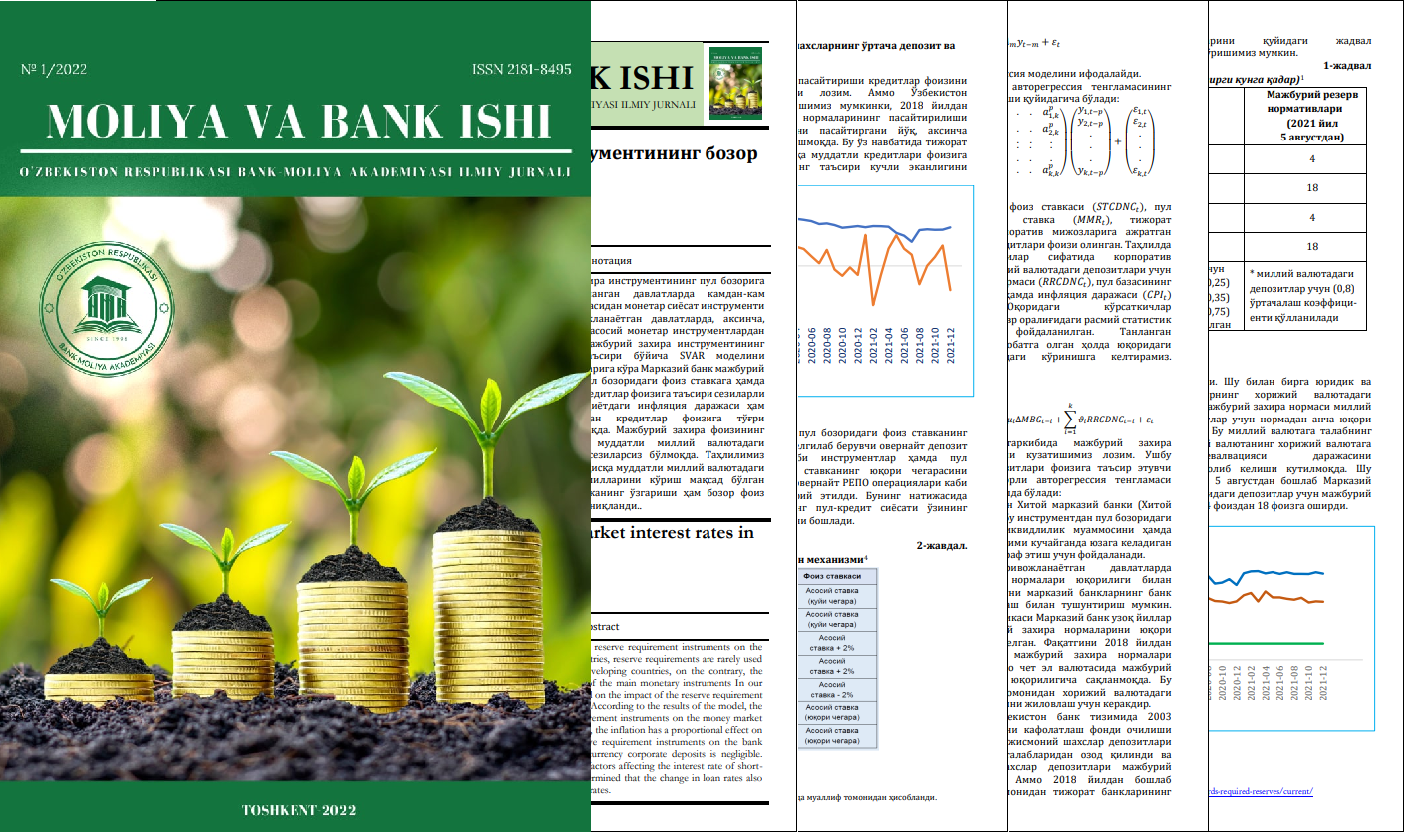Статьи выпуска
Опубликован 29.12.2022
Ключевые слова
- public debt, poverty, economic growth, institutional quality, inflation, human development.
Как цитировать
Sattoriy, F. (2022). Empirical analysis of the relationship between public debt and poverty reduction. ФИНАНСЫ И БАНКОВСКОЕ ДЕЛО, 8(4), 63–69. извлечено от https://journal.bfa.uz/index.php/bfaj/article/view/109
Аннотация
Библиографические ссылки
- Ashraf, M. W., Akhtar, M. J., Hafeez-ul-Rehman, P., & Awan, A. G. (2020). Impact of external debt on poverty in Pakistan. Glob. J. Manag. Soc. Sci. Humanit, 6, 251-271
- Bhattacharya, P. C. (2007). Economic development, gender inequality, and demographic outcomes: Evidence from India. Population and Development Review, 33(2), 263-291.
- Birdsall, N., Kelley, A. C., & Sinding, S. W. (2001). Population matters: Demographic change, economic growth, and poverty in the developing world. Oxford University Press.
- Bloom, D. E., & Canning, D. (2004). Global demographic change: Dimensions and economic significance. NBER Working Paper, No. 10817.
- Bloom, D. E., Canning, D., & Sevilla, J. (2003). The demographic dividend: A new perspective on the economic consequences of population change. RAND Corporation.
- Bulir, A. (2001). Income inequality: Does inflation matter? IMF Staff Papers, 48(1), 139-159.
- Chong, A., & Calderon, C. (2000). Causality and feedback between institutional measures and economic growth. Economics & Politics, 12(1), 69-81.
- Clements, B., Bhattacharya, R., & Nguyen, T. Q. (2003). External debt, public investment, and growth in low-income countries. IMF Working Paper, No. 03/249.
- Dabla-Norris, E., Kochhar, K., Suphaphiphat, N., Ricka, F., & Tsounta, E. (2015). Causes and consequences of income inequality: A global perspective. International Monetary Fund.
- Dollar, D., & Kraay, A. (2002). Growth is good for the poor. Journal of Economic Growth, 7(3), 195-225..
- Easterly, W. (2001). The elusive quest for growth: Economists' adventures and misadventures in the tropics. MIT Press.
- Easterly, W., & Fischer, S. (2001). Inflation and the poor. Journal of Money, Credit and Banking, 33(2), 160-178.
- Gupta, S., Davoodi, H., & Tiongson, E. (2001). Corruption and the provision of health care and education services. In The political economy of corruption (pp. 123-153). Routledge.
- Loayza, N. V., & Raddatz, C. (2010). The composition of growth matters for poverty alleviation. Journal of development economics, 93(1), 137-151.
- Mbang, O. M. (2021). External Public Debt and Poverty Reduction in Cameroon. Sch J Econ Bus Manag, 8, 351-363.
- Naeem, J., & Sherbaz, S. (2016). Indebtedness and poverty: the case of Pakistan. The Pakistan Development Review, 823-835.
- Okon, E. O., & Monday, O. I. (2017). Empirical and evidence-based investigation: External debt, poverty and economic growth nexus. International Journal of Applied Economics, Finance and Accounting, 1(1), 37-47.
- Ranis, G., Stewart, F., & Samman, E. (2006). Human development: beyond the human development index. Journal of Human Development, 7(3), 323-358.
- Saungweme, T., & Mufandaedza, S. (2013). An empirical analysis of the effects of external debt on poverty in Zimbabwe: 1980–2011. International Journal of Economics and Research, 4(6), 20-27.
- YILDIZ, F. THE IMPACT OF EXTERNAL DEBT AND FOREIGN AID ON POVERTY: EVIDENCE FROM HEAVILY INDEBTED POOR COUNTRIES (HIPC). Yayın Koordinatörü• Yaşar HIZ Genel Yayın Yönetmeni• Aydın ŞİMŞEK, 37.

